 Adding Fun, Friendly Competition to Training
Adding Fun, Friendly Competition to Training
Jeopardy, MythBusters, trivia games, Words with Friends, Duolingo, Comedy Defensive Driving courses, and eLearning gamification… What do they have in common? They all bring fun to learning, which engages the audience and makes content memorable. As a multimedia and eLearning development company, Left Brain Media is mindful of the best delivery method for the content and training audience. Sometimes an eLearning game is a great choice, but only after careful consideration.
What Is Gamification?
Gamification is the process of adding games or game-like elements to something to encourage participation. Gamification techniques can leverage people’s natural desires for socializing, learning, mastery, competition, achievement, status, and self-expression.
When properly executed, gamification works well for several purposes, including:
- Training: When games are aligned with learning objectives that are truly relevant to the audience, they create a training pathway that keeps people coming back for more. Most people think of an eLearning game as an alternative to a quiz. After all, they often both check understanding and retention of content taught previously. But eLearning gamification can also teach content for the first time, and we’ll share an example later in this article.
- Marketing and Customer Retention: More than 70 percent of Forbes Global 2000 companies said they plan to use gamification for the purposes of marketing and customer retention, according to a recent survey.
- Ideation, or structured brainstorming to produce new ideas.
- Promoting Behaviors: For instance, the location-based Pokémon Go mobile gaming app effectively promotes ongoing physical exercise. Activity tracking devices like the Fitbit have a similar goal. They encourage users to exercise more to improve their overall health while enabling competition among friends.
 Is eLearning Gamification an Effective Tool or a Money Pit?
Is eLearning Gamification an Effective Tool or a Money Pit?
The idea of incorporating games into training has gotten mixed reviews. If the game aesthetics, theme, and content don’t take the audience into account, eLearning gamification may be an epic fail. However, an eLearning game that is highly interactive and fits the target audience can be one of the most effective ways to teach content and engage learners.
A game with a silly theme to eLearning aimed at lawyers or doctors is a bad idea. (And yes, we have seen other vendors do things like this way too often.) But a game about healthy living habits aimed at new employees can engage them where other forms of learning fail.
What are Some Common Key Traits of Effective eLearning Gamification?
eLearning games should have high production value, map to learning objectives, and be designed with the specific audience in mind to be both fun and engaging. What are some other winning elements that often help?
- Timer: Including a timer is one simple way to build a game-like feature into an otherwise normal eLearning activity.
- Point System with an Unlimited High Score: Traditional quizzes have scores from 0 to 100%. But a good eLearning game has scores with virtually endless point possibilities. How do you make this happen? There are several ways. For example, you can provide bonuses if the user correctly answers questions in a row and add time to the clock for correct answers. Similarly, you can penalize random guessing. Also, some questions can have higher point values, and the game can give higher points when a user achieves mastery of a learning objective. There are many more ways to allow users to earn higher and higher scores. Upon release of a game, we are often impressed to see how high learners’ scores get. Their scores often exceed anything we see while testing the game.
- Competition: Going along with the item above, playing against others is also a great motivator. The social component of eLearning gamification is often very important. Including a leaderboard in the game shows how a player’s score stacks up. It’s a simple way to encourage competition. However, you need to be careful not to shame players with lower scores as they are still learning, so usually our leaderboards will only show the top players who have scores that are noteable. Other things like player-to-player challenges can also add to the fun and engagement.
- Rewards and Recognition: Game achievements like reaching a new level, moving a meter, or earning badges or trophies are all great ways to applaud performance. However, just the fact that a person is participating in eLearning game play should also be recognized. Otherwise, those with a low scores may quit playing if they think they can’t catch up. Some organizations offer extrinsic rewards for top players and drawings for those who participate. If you choose to do so, keep them simple and inexpensive. Bragging rights, a free cup of coffee, a “shout out” in a meeting, or a one-day pass to park in a reserved spot can be incentive enough.
- Aesthetics: Let’s talk about the look-and-feel of the eLearning game. Music, sound effects, graphic design, and animation all contribute to the user experience. The design can also reinforce the corporate brand and/or carry out a theme. You may also consider incorporating some customization options into your game, like avatars and personalization options. The key here is the target audience. For example, a game themed like it is for children will repel most adults. However, if you take a quick look at any adult’s smart phone, you will likely find a few beloved games with nice aesthetics.
- Rapid Development Technology: For instance, Tumult HYPE is a great tool for creating online games. It offers impressive HTML 5 animation features while also integrating with JavaScript. The result can be games that play well on all modern platforms and that are easy to maintain and update. What are some other potential perks this technology makes possible? These games can load quickly over mobile networks, and they don’t require special software or downloads.
- Data Storage and Reporting Features: How can you truly gauge how effective your eLearning game is? Certainly you need a way to track user progress and content mastery. Think about the data you want to collect, and ensure your game is developed to deliver with easy-to-follow reports. Most learning management systems do not really allow the type of data storage needed to add the social environment and competition aspects to a game. If these are important to you, make sure your vendor has experience setting these up in a cost-effective way.
- Simulation: Some of the best games for adults simulate the type of environment where they are going to have to use the content. Simulation games are very effective at both teaching users and testing their knowledge.
From eLearning Game Plan to Game On
Left Brain Media has the in-house resources to create engaging eLearning games and courses. We guide clients with objective and expert input as they consider whether gamification of content is right for their training audience and needs. Then we bring the project to fruition, from concept development to programming, from content integration to deployment, and every step in between.
Whether the topic is employee onboarding, leadership development, a new product launch, health and wellness, soft skills, or some other topic, eLearning gamification can be engaging and effective. We invite you to contact us to set up a full demo of our work. In the meantime, we want to give you a glimpse of some of our custom gaming solutions, including:
- An eLearning game website to teach content
- eLearning gamification to reinforce instructor-led training (ILT)
Example 1: An eLearning Game Website to Teach Content
A retail chain was seeking a non-traditional way to equip and inspire its diverse workforce to make healthy choices. See the gaming solution we created for this eLearning experience.
Example 2: eLearning Gamification to Reinforce Instructor-Led Training
One of the nation’s leading transportation companies approached Left Brain Media in preparation for their annual leadership conference. The in-house training team knew from experience they needed reinforcement. See the gaming solution we created to drive home their face-to-face training.
What About Incorporating Games Not on a Computer?
Left Brain Media also produces marketing and support materials for other types of games. For instance, a national non-profit that strives to save and improve lives planned a scavenger hunt fundraising event. How did we help make it a success? First, Left Brain Media created a promotional video for the event. We also developed a website to help leaders plan, build their volunteer team, and set fundraising goals. Watch the promotional video we produced to learn more about this gaming experience.
It’s Game Time!
How well you retained the information we presented in this article? Find out as you play a game. Simply click the orange “Play Game” button, listen to the instructions, and then it’s game on.
Win at Your Own eLearning Game
Do you want some help with your next learning game? We’ve built many long-term client relationships over the last 20 years as a multimedia and eLearning development company. We deliver creative, custom solutions that solve real customer needs. What needs do you have? Contact us to set up a meeting to discuss them and how Left Brain Media can help.
Continue Reading
We cover related topics in these articles:
- Planning for eLearning Development
- Professional eLearning Development Process – Part 1
- Professional eLearning Development Process – Part 2
- eLearning Scope or RFP Checklist for Realistic Quotes
- The Culprits of eLearning Scope Creep
- Tips for Writing eLearning Scripts
More Information About eLearning Gamification
To learn more about gamification, read these articles from other sites.
- Get Your Game On: Benefits of Gamification in Online Learning – by Scout Stevenson
- 6 Gamification Strategy Tips for Your Business – by Cameron Brain
- Gamification – Interaction Design Foundation
- What is Gamification? – Business News Daily
- Gamification: A Guide – by Hal Koss
- Gamification 101: How It Benefits Employee Learning and Development – by Madison Horth
- Pass Go and Collect Results: Using Gamification in Leadership Development – by Adelle J. Dantzler, M.S.Ed.
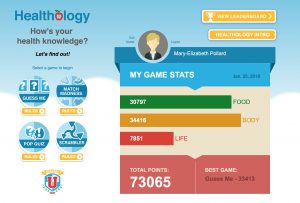


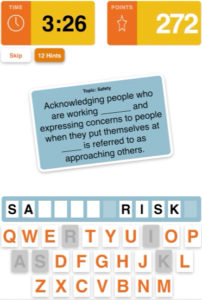
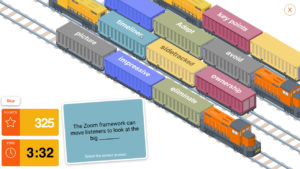
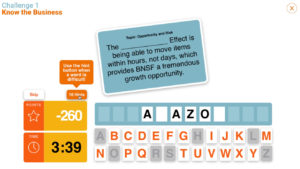
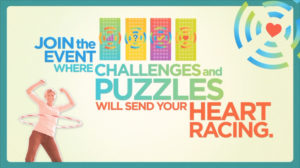


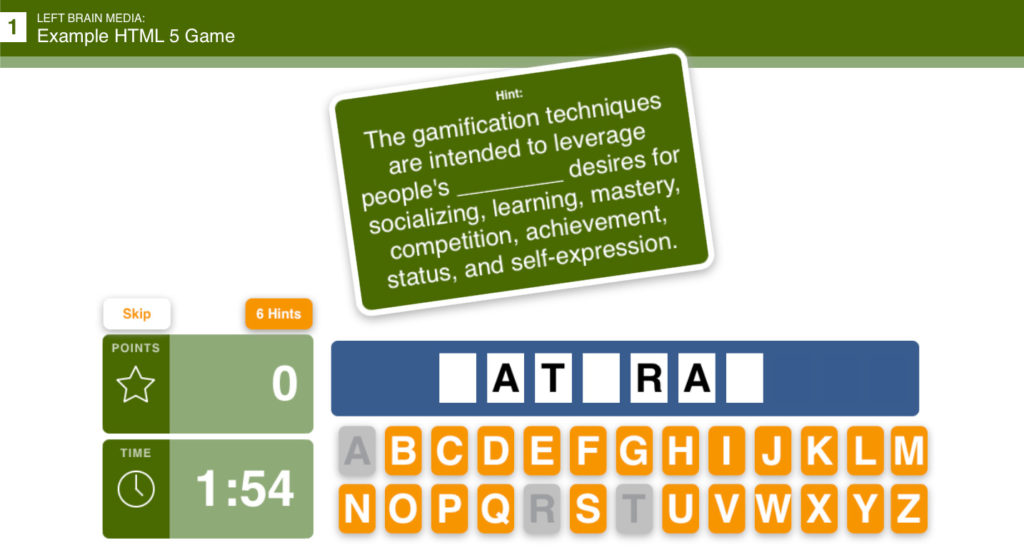
You must be logged in to post a comment.